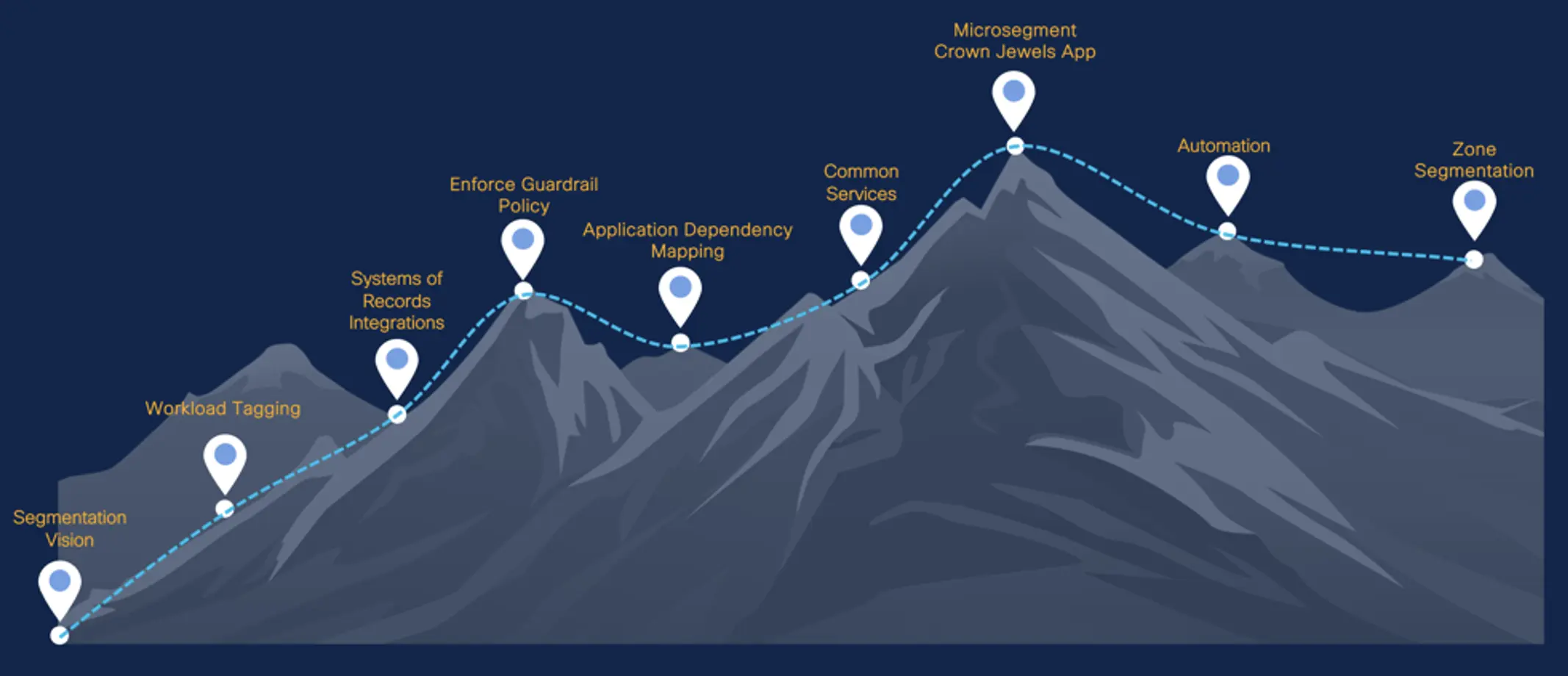- This SSD docking station is one of my best investments for my PC - and it's on sale
- Why I recommend this Nikon camera to most beginner photographers - especially at this price
- I changed 7 Samsung phone settings to give it an instant battery boost
- Many ways to use the date command on Linux
- Customer Experience is Ready to Engage at Cisco Live
The Customer Adoption Journey of Cisco Secure Workload

In today’s rapidly evolving threat landscape, securing workloads across diverse environments is critical for organizations of all sizes. Cisco Secure Workload (formerly Tetration) provides end-to-end visibility, microsegmentation and advanced security capabilities for workloads deployed across data centers and cloud environments. This blog post explores the customer adoption journey of Cisco Secure Workload, highlighting key stages and best practices for successful implementation.
Awareness: Identifying the need
The adoption journey typically begins with the realization of increased security risks tied to hybrid cloud environments. Many organizations recognize the challenges of managing dynamic workloads, particularly in protecting against lateral movement of threats. At this stage, businesses often face visibility gaps and compliance pressures, driving the need for a solution like Cisco Secure Workload.
Evaluation: Exploring Cisco Secure Workload capabilities
Once aware of the need for a comprehensive workload security solution, the next step is evaluating Cisco Secure Workload. This involves identifying how it addresses specific business challenges, including:
- Real-time workload visibility
- Application dependency mapping
- Microsegmentation capabilities
- Comprehensive threat detection
Engaging with Cisco’s sales and technical teams, participating in webinars and reviewing case studies are all part of this exploration phase. Many organizations conduct proof of concept (PoCs) trials to see how the solution fits within their unique environments.
Implementation: Deploying Cisco Secure Workload
After selecting Cisco Secure Workload, the deployment phase begins. During implementation, businesses start configuring the platform, which may involve:
- Installing sensors on workloads (physical, virtual or containerized)
- Setting up guardrail/compliance policies
- Discovering policies for microsegmentation
- Integrating the solution with existing security tools, workflows and systems of records
- Analyzing and enforcing policies in a phased manner, i.e., zone by zone or app by app
Cisco Secure Workload offers intuitive dashboards and automation features, which simplify this process for IT and security teams.
Optimization: Fine-tuning for maximum efficiency
Following the initial deployment, organizations focus on refining their configurations. This optimization phase ensures policies are accurately enforcing segmentation without affecting business operations. Continuous monitoring, policy adjustments and leveraging Cisco’s insights for improving security postures are key activities during this stage.

Scaling: Expanding workload security across the organization
As businesses grow and their workloads expand, Cisco Secure Workload scales seamlessly. Whether adding new cloud instances or expanding to multi-cloud environments, Cisco’s platform supports growth without compromising security. This final phase of the adoption journey solidifies Secure Workload as a long-term, integral part of the organization’s security strategy.
The customer adoption journey of Cisco Secure Workload is a step-by-step progression that addresses modern security challenges across hybrid and multi-cloud environments. By following these phases, organizations can ensure a successful implementation that provides comprehensive security, visibility and compliance for all their workloads.
We’d love to hear what you think. Ask a Question, Comment Below, and Stay Connected with Cisco Secure on social!
Cisco Security Social Channels
Instagram
Facebook
Twitter
LinkedIn
Share:

